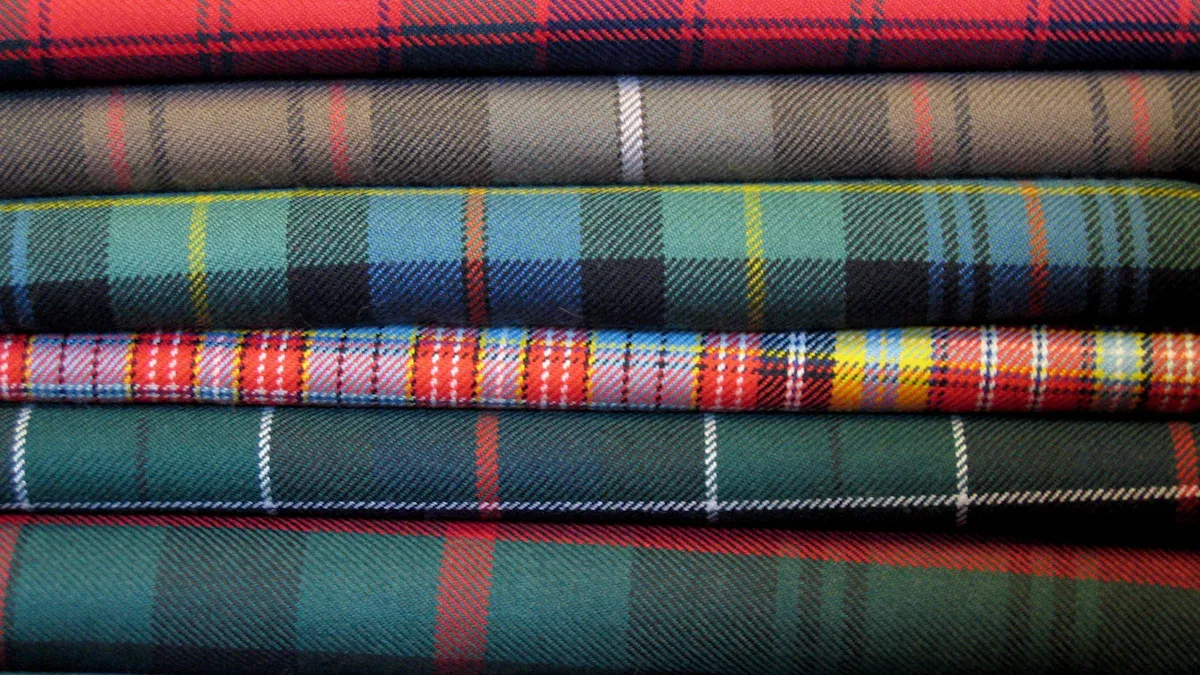
Printed flannel fabric is a soft, woven material. This popular fabric is brushed to create a fuzzy “napped” surface. The printed designs add unique style. The main appeal of flannel lies in its special combination of exceptional warmth, softness, and creative versatility. This fabric provides ultimate comfort. The versatility of printed flannel makes it a favorite for many projects, offering both comfort and warmth. The global flannel fabric market reflects this popularity.
The market was valued at USD 3.2 billion in 2024. It is projected to reach USD 5.1 billion by 2033. This growth highlights the enduring demand for the comfort, warmth, and softness of this fabric.
Key Takeaways
- Printed flannel fabric is a soft, warm material with fuzzy surfaces and unique designs.
- Flannel is made from cotton, wool, or synthetic fibers, and a special brushing process makes it soft.
- You can use printed flannel for cozy home items, comfortable clothes, and fun crafts.
- Always wash flannel before sewing to stop it from shrinking, and use special stitches to keep it from fraying.
- To keep flannel soft, wash it in cool water with mild soap and dry it on low heat.
Understanding the Qualities of Printed Flannel Fabric
The appeal of printed flannel fabric comes from its unique material properties. Its construction gives it the signature comfort and versatility that people love. Understanding these qualities helps in choosing the right fabric for any project.
Material Composition and Weave
Flannel fabric is made from different materials. The type of fiber affects the final feel and function. There are several common types of flannel fabric.
- Cotton flannel is lightweight yet durable, offering great comfort.
- Wool flannel provides exceptional warmth due to its exceptional insulating properties.
- Synthetic types of flannel fabric, like polyester, are often more affordable.
The weave also influences the fabric’s texture. Flannel uses either a plain or twill weave before the brushing process. Each weave creates a different base.
| Weave Type | Texture |
|---|---|
| Plain Weave | Smooth, flat |
| Twill Weave | Textured, rugged |
A plain weave gives the fabric a uniform feel. A twill weave creates a diagonal pattern and a softer texture. However, the napping process is what truly gives all types of flannel fabric their famous softness.
The Signature Napping Process
Napping is a mechanical finishing process. It raises fibers on the fabric’s surface. Machines with wire-covered rollers brush the fabric, pulling up tiny fiber ends. This technique transforms a flat woven fabric into the cozy flannel we know. The process is key to its warmth and comfort.
This crucial step creates the fuzzy texture that traps air, providing warmth. The result is a fabric with superior softness and a plush feel, perfect for staying comfortable.
Variety in Prints and Patterns
Printed flannel offers incredible creative versatility. The soft surface of the fabric is an excellent canvas for countless designs. Patterns range from classic to contemporary, suiting many different tastes. Novelty prints are the most popular category, followed by juvenile and animal themes. This wide variety makes printed flannel a go-to choice for personalized projects. The right printed design can add character to clothing, accessories, or home decor, combining comfort with style.
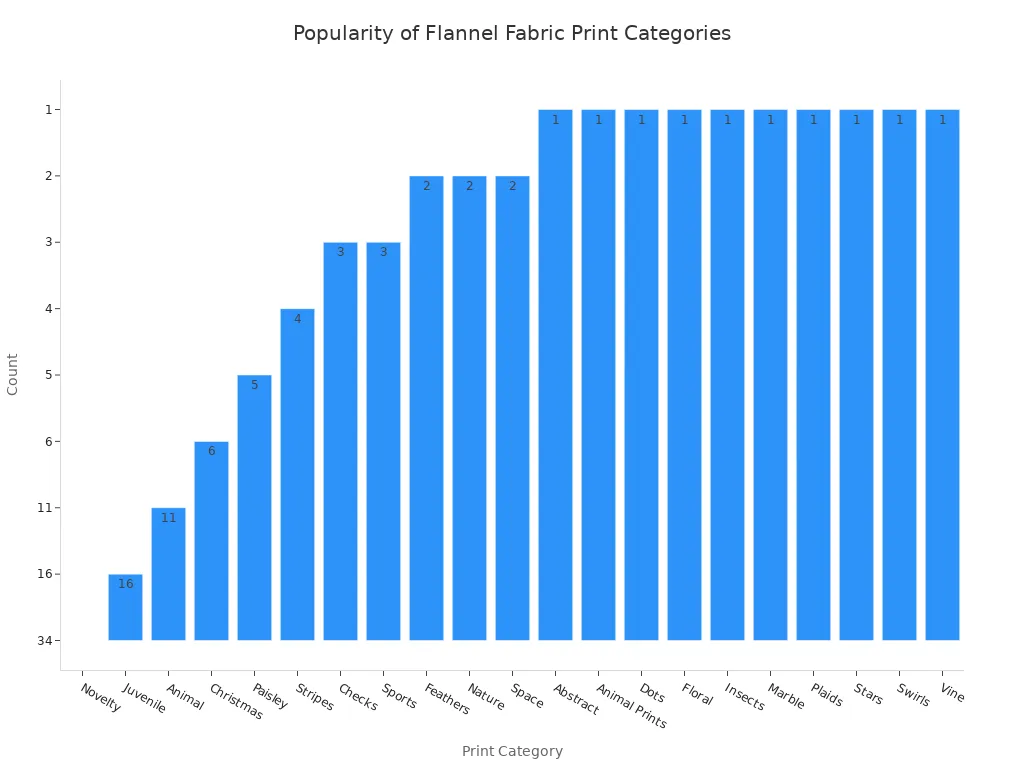
Creative Project Ideas for Printed Flannel
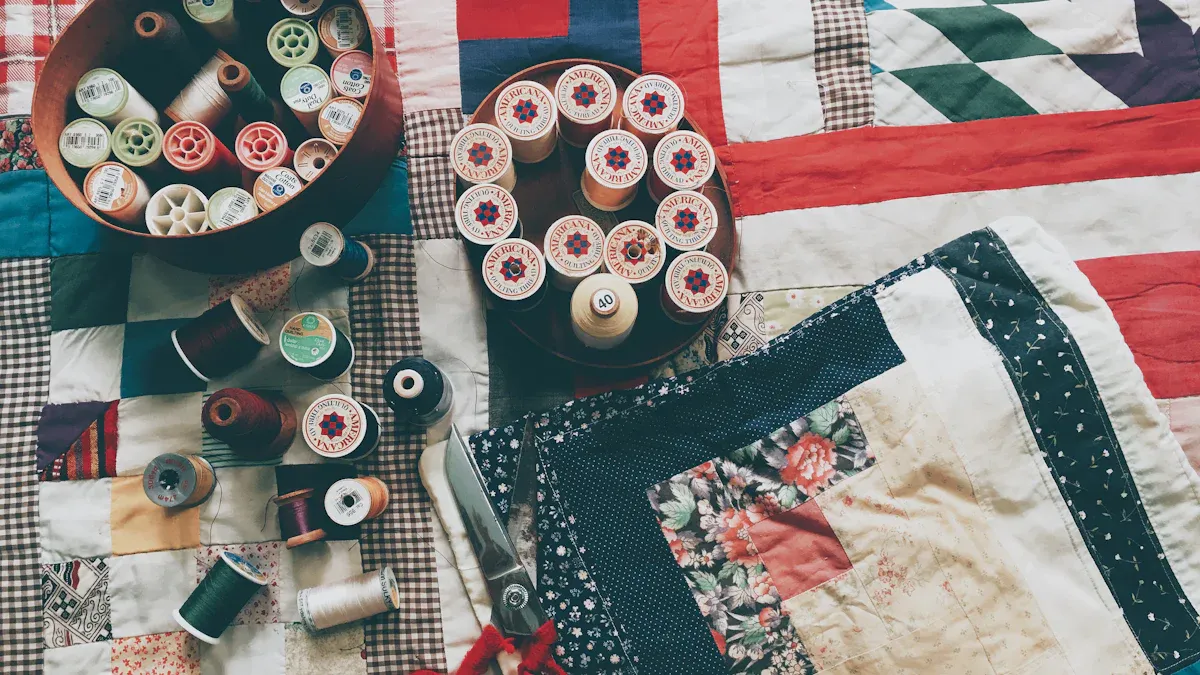
The versatility of printed flannel fabric opens up a world of creative possibilities. Its unique combination of softness, warmth, and decorative potential makes it a favorite for many projects. From home goods to stylish apparel, flannel provides both comfort and a personal touch. Understanding how is the flannel fabric used can inspire your next creation.
Cozy Home Decor and Bedding
Flannel brings exceptional warmth and comfort to any living space. Its soft texture is perfect for items meant for relaxation. Crafters can easily create custom home decor that adds a cozy feel.
Making your own flannel blankets is a popular project. You can create a simple, warm covering with just a few steps.
- Wash the flannel fabric pieces before you start.
- Place the fabrics with their right sides together.
- Use straight pins to hold the layers in place.
- Trim the pieces to match in size.
- Sew a straight line around the edge, but leave a 4 to 5-inch opening.
- Snip the corners and turn the blanket right-side out.
- Hand-sew the opening closed.
- Add a top stitch about 4 inches from the edge to create a border.
Decorative pillows are another easy way to use flannel. A no-sew flannel throw pillow project takes only about 15 minutes. You can wrap an old pillow with flannel fabric and secure it with fabric adhesive. This is a quick update for any room. For those who prefer sewing, many DIY tutorials exist for creating decorative throw pillows from scratch. These projects result in beautiful, soft bed linens and couch accessories.
You can also make larger bedding items like duvet covers and pillowcases. Using standard measurements ensures a perfect fit for your bed.
| Item | Size | Dimensions |
|---|---|---|
| Duvet Cover | Full/Queen | L 90″ x W 90″ |
| Duvet Cover | King/California King | L 94″ x W 106″ |
| Pillowcase | Standard | L 29″ x W 19″ |
| Pillowcase | King size | L 36″ x W 20″ |
| Pillowcase | European | L 26″ x W 26″ |
These dimensions provide a helpful guide for cutting your fabric for custom blankets and bedding.
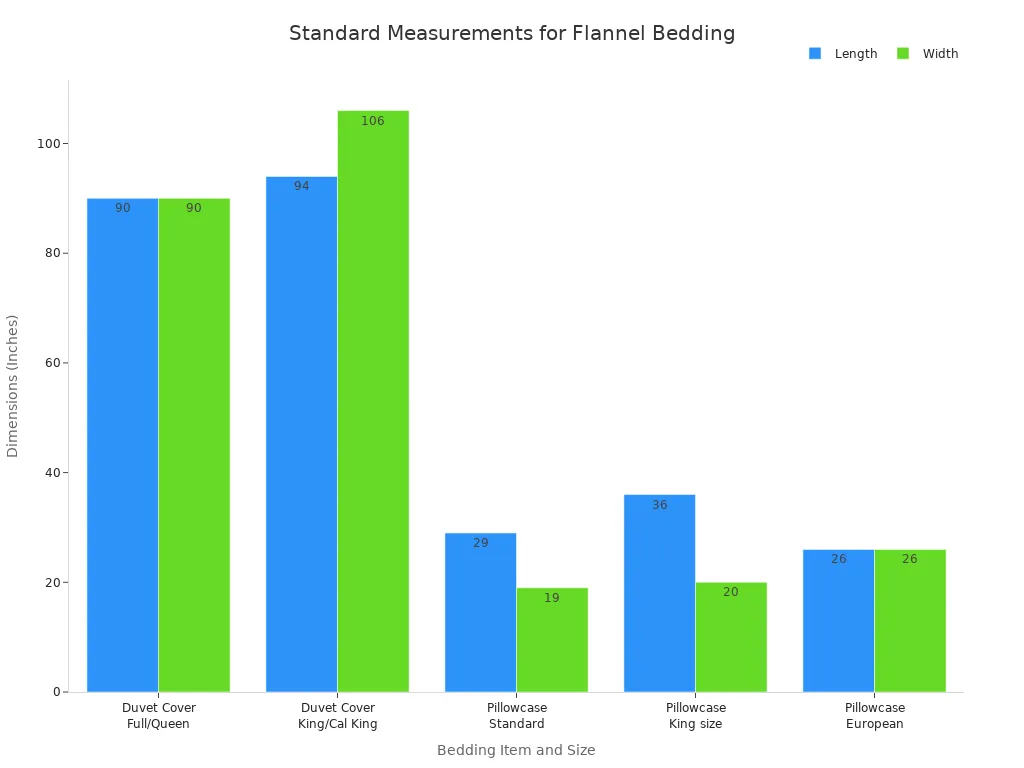
Stylish Apparel and Loungewear
Flannel is a classic choice for comfortable clothing, especially during cold weather. Its softness makes it ideal for items worn close to the skin. The fabric is famous for its use in cozy shirts and cozy pajamas.
Flannel shirts are a timeless wardrobe staple. Many sewing patterns are available for creating your own custom shirts.
- The Lumberjack Shirt Sewing Pattern is a popular choice for women’s casual flannel shirts.
- The Rondeau casual shirt pattern offers a versatile option for men’s shirts.
- Simplicity’s S1544 pattern provides a basic design for men’s shirts that works well with flannel.
- Patterns also exist for Big and Tall plaid flannel shirts for men, ensuring a good fit for all sizes.
Beyond classic shirts, flannel is the ultimate fabric for loungewear. Nothing beats the comfort of flannel pajamas. People love making matching sets of pajamas for the whole family. The warmth of the fabric makes these pajamas perfect for winter nights. You can find patterns for all kinds of pajamas, from simple pants to full two-piece pajamas sets. These cozy pajamas offer both comfort and style. The variety of printed designs allows for fun and personalized pajamas.
Fashion designers even incorporate flannel into their collections. Jawara Alleyne featured a two-piece flannel dress, while E.L.V. Denim showcased a two-tone plaid flannel shirt. This shows the fabric’s style versatility.
Whether you are making classic shirts, comfortable clothing, or trendy pajamas, flannel is an excellent choice. The right printed flannel can elevate simple clothing designs. The options for shirts and pajamas are nearly endless.
Fun Accessories and Crafts
Printed flannel is perfect for smaller projects and accessories. These crafts are a great way to use smaller pieces of fabric or to try sewing with flannel for the first time. The fabric’s durability and softness make it suitable for items that get a lot of use.
An infinity scarf is a simple yet stylish accessory to make. You can create one with just a few yards of fabric.
- Prewash your flannel to prevent future shrinkage.
- Cut two long pieces of fabric.
- Fold one piece lengthwise and sew the long edge to form a tube.
- Turn the tube right-side out.
- Fold one short end inward to create a clean hem.
- Tuck the other raw end inside the hemmed end and pin them together.
- Sew the ends together to complete the loop.
This project is a great way to showcase a favorite printed design. You can even make upcycled scarves from old flannel shirts.
Flannel is also a wonderful choice for baby accessories. Its gentle texture is perfect for a baby’s sensitive skin. You can sew reversible baby bibs or soft burp cloths. Adding decorative stitches in a criss-cross pattern can prevent the inner batting from bunching in the wash. These small touches make the items both beautiful and practical.
Finally, do not throw away your flannel scraps! The versatility of the fabric extends to even the smallest pieces. You can use them for many fun crafts.
- DIY Plaid Flannel Coasters
- Small tie-up Christmas tree ornaments
- Flannel wreaths for holiday decor
These small projects are a fantastic way to use every last bit of your beautiful fabric, reducing waste and creating charming handmade items.
How to Choose and Sew with Flannel
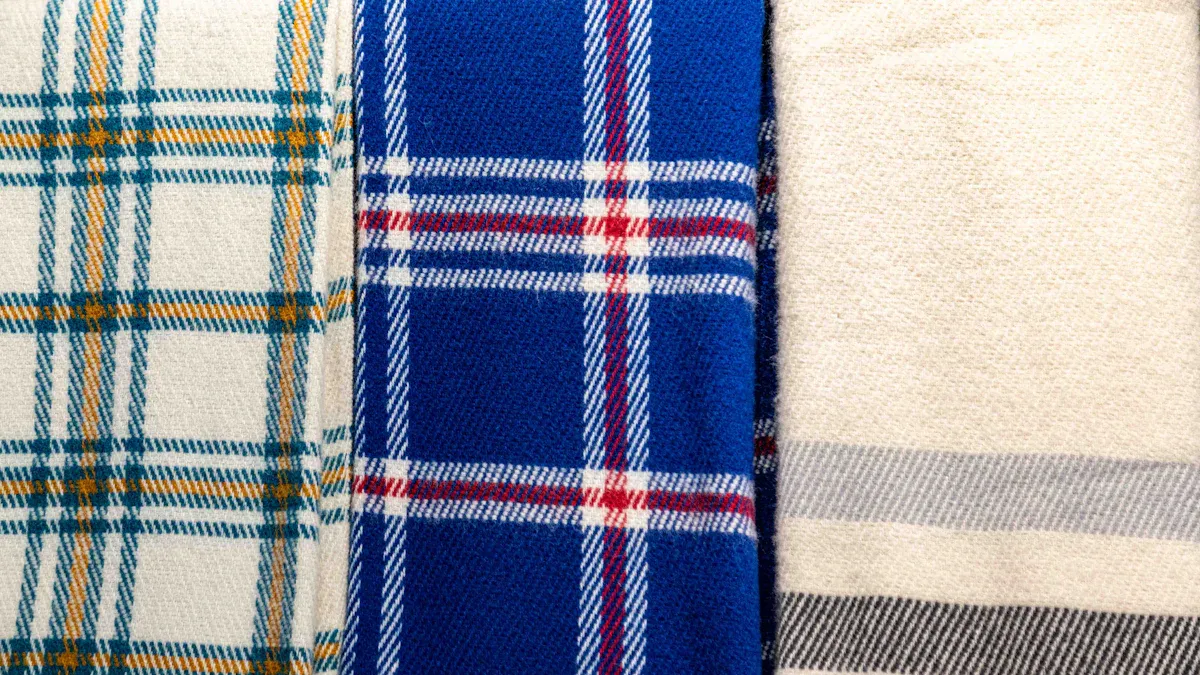
Working with printed flannel fabric can be a rewarding experience. Choosing the right material and using proper techniques are key to a successful project. These steps ensure your final creation offers both durability and comfort.
Selecting the Right Fabric for Your Project
Selecting a high-quality flannel fabric is the first step toward a great result. People should check for several quality indicators before buying. A good quality flannel feels substantial, and you should not see much light through it.
- Weave Density: The threads in the fabric should be close together. You should not be able to pull them apart easily with your fingers. An even weave signals a durable fabric.
- Color Evenness: High-quality printed fabric shows rich, consistent color from all angles. The dye should look saturated deep into the fibers.
- Pattern Clarity: A well-made flannel has patterns with crisp, clean edges. The designs should not be blurry or misaligned.
Colorfastness is another vital quality for printed flannel. The textile industry uses specific standards to test how well colors hold up. This quality assurance helps maintain the fabric’s appearance after washing, which is important for clothing and home goods.
Essential Tips for Sewing Flannel
Sewing with flannel requires a few special considerations. This fabric is known to shrink, so pre-washing is essential. Crafters should buy an extra 1/8 to 1/4 yard of flannel fabric to account for this shrinkage. This step prevents the finished clothing from becoming too small. Understanding how is the flannel fabric used in a project helps determine the best sewing approach for maximum comfort and style.
Finishing the seams properly is crucial because flannel can fray. Different techniques can create a clean, durable edge for your clothing.
- Overlocker/Overlock stitch: This method works well for most flannel projects. It creates a professional finish that stops fraying on straight or curved seams.
- French Seam: This technique encloses the raw edges completely. It provides a very neat finish for lightweight flannel clothing but is not ideal for thick layers.
Another simple option is using pinking shears. Trimming the seam allowance with these shears creates a zigzag edge. This pattern helps reduce fraying and is suitable for medium-weight flannel. These tips help ensure every project provides lasting comfort.
Care and Maintenance for Your Flannel Items
Proper care extends the life of printed flannel items, preserving their signature comfort and appearance. Following the right maintenance steps ensures the fabric remains a cozy favorite for years.
Washing and Drying Instructions
Correct washing is key to maintaining the softness of flannel. People should launder the fabric in cool to warm water. Hot water can cause shrinkage and reduce the material’s quality.
- Use a mild, dye-free detergent to protect the printed colors and fibers.
- Avoid harsh chemicals or bleach.
- Select a gentle or permanent press cycle on the washing machine.
When drying, there are two main options. Machine drying on a low-heat setting is quick and convenient. However, air-drying is more economical and can extend the life of the flannel fabric. A thick flannel blanket may take a long time to air-dry and can feel stiff afterward. For maximum softness, tumbling in a dryer on low heat is often the best choice for this fabric.
How to Manage and Prevent Pilling
Flannel is a loosely woven fabric, which makes it prone to pilling over time. These small balls of fiber can appear after normal wear and washing. Luckily, people can manage and remove them easily.
After removing pills, washing the flannel item in cold water with a mild detergent helps prevent new ones from forming. Proper care keeps the fabric smooth and comfortable.
Proper Storage Techniques
Storing flannel correctly protects it from damage during off-seasons. Before storing, always wash and thoroughly dry each item. This step removes oils and dirt that can attract pests.
| Storage Option | Benefit |
|---|---|
| Canvas Bags | Allows the fabric to breathe, preventing mustiness. |
| Plastic Bins | Protects from moisture, dust, and pests. |
Store flannel in a dark, climate-controlled space like a linen closet. Avoid basements or attics, where temperature changes can cause damage. Adding cedar blocks to storage containers helps deter pests and keeps the flannel fresh. This care ensures the warmth and comfort of your flannel is ready for the next cold weather season.
Printed flannel fabric shows incredible versatility for countless projects. This printed flannel is perfect for everything from cozy home goods to fashionable apparel. A quality Suerte flannel is an excellent choice. It delivers a unique blend of comfort, warmth, and style.
Get started on your next project with this flannel fabric. Discover the comfort, warmth, and style this flannel offers. The flannel’s versatility and softness make it a user-friendly fabric. The flannel provides lasting comfort and warmth. The flannel has great softness. The flannel is a great choice. The flannel is a printed fabric.
FAQ
What is the best way to pre-wash flannel?
People should wash flannel fabric in cool or warm water. Use a gentle cycle with a mild detergent. This initial wash helps manage shrinkage. Drying the flannel on low heat also prepares the material for sewing. Proper care for flannel starts here.
Does all flannel shrink the same amount?
Shrinkage varies based on the fiber content. Cotton flannel typically shrinks more than a synthetic flannel blend. High-quality flannel with a dense weave may shrink less. Pre-washing is always the best practice to control the final size of your project.
Is flannel a good fabric for beginners?
Yes, flannel is an excellent choice for new sewers. The fabric is stable and does not slip easily. Its soft texture is forgiving. Beginners can confidently make simple items like scarves or pillowcases with flannel. This flannel is very user-friendly.
Can you use flannel for summer projects?
Lighter-weight cotton flannel can work for some summer items. People use it for cool evening shirts or lightweight baby blankets. While known for warmth, a breathable flannel offers comfort without being too heavy for milder weather.



